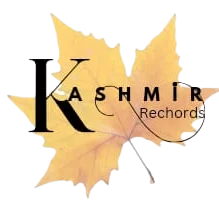(Kashmir Rechords Desk)
Two Zadoo Brothers from Anantnag district—Dina Nath and Kanti Chandra, who find their name incorporated in the category of “ Unsung Heroes’’, prepared by Government of India during ``Azadi Ka Amrit Mahotsav’’, were closely associated with Netaji Subash Chandra Bose.
Born in 1916 and 1918, respectively, to Prof. Jagaddhar Zadoo, the elder brother (Dina Nath Zadoo) had worked as the Captain in the Azad Hind Fauj. He fought at Malaysia. He died in 1986 in India. His younger brother, Kanti Chandra Zadoo was the Personal Secretary of Netaji Subhash Chandra Bose.

According to the inputs provided by Ministry of Culture, Kanti Chandra Zadoo is believed to have been on board the same aircraft, which mysteriously crashed in 1945, resulting in the death of both Subhash Chandra Bose and Kanti Chandra. (Although, for many people the death of Netaji has been a cause of disagreement in the history of Indian freedom struggle).
``Azadi Ka Amrit Mahotsav’’ was an initiative of the Government of India to celebrate and commemorate 75 years of independence and to highlight the glorious history of its people, culture and achievements. Under the same initiative, in June 2023, Centre for Advance Research on Development and Change, in collaboration with Degree College Anantnag had orgainsed a lecture on “ Role of Kashmir in the India Freedom Struggle’’, to remember freedom fighters like Zadoo Brothers.

Noted writer, Avtar Mota in his Blog “Chinar Shade’’ also mentions about Zadoo Brothers and their association with Subash Chandra Bose. “Beyond a three or four references, no research has been done on this aspect at any point of time’’, he regrets.
Prof Jagaddhar Zadoo
Dina Nath and Kanti Chandra were sons of an illustrious Professor Jagaddhar Zadoo, who was a Sanskrit scholar, and a master of oriental languages. Zadoos originally belonged to Zadipur, a village near Bijbehara, Anantnag in South Kashmir from where the family had migrated to Srinagar at the beginning of the 18th century. Their surname was linked to the village of their origin and remained with them thereafter.
“In 1921, their father joined the Jammu and Kashmir Research Department as head and worked there until 1924. And again from 1928-31, he worked as a professor of Sanskrit in Srinagar where he translated some portions of the Gilgit manuscript discovered in 1931 and brought out critical editions of Nilmat Purana jointly with Prof Kanji Lal. His works instilled respect for the cultural heritage of the country in the heart and minds of the family members’’. (Source:https://amritmahotsav.nic.in/unsung-heroes-detail.htm?15264)
Prof Zadoo was a part of the vibrant interface of scholarship between western scholars and Kashmiri Sanskrit scholars. His scholarship elevated him to the level of an excellent researcher and exposed them to International literary circles. He was the first Sanskrit scholar to work with Japanese scholar Momo Motokora on the Shaivite text. His unpublished autobiography in two volumes reveals the nationalistic approach of the Zadoo family. Prof Jagaddhar Zadoo was the grandson of Pandit Keshav Bhat Zadoo, the Royal Astrologer of Maharaja Ranbir Singh.
Another Zadoo from Srinagar
Pushkar Nath is another Zadoo from Srinagar, Kashmir whose name also figures in the list of Freedom Fighters of “ Azadi Ka Amrit Mahotsav’’ from Jammu and Kashmir.
Born on 15 April 1928 to Pt. Vasudev Zadoo and Smt. Devki Zadoo, Pushkar Nath studied the Science stream subjects for his graduation in Amar Singh College, Srinagar. He was attracted to the Progressive Group that started a Peace Brigade as first line of defence of Kashmir. Led by Pushkar Nath Zadoo, some volunteers went to Handwara to stall the march of invaders and to assist the units in the Handwara-Kupwara-Teetwal region. This area continued to see action until 1948.

Young men like Pushkar Zadoo were deployed to provide logistical support to the Indian forces and assisted in gathering of local information/intelligence. He was deployed on the Teetwal Front, where he died in action in July 1948.
Krishna Misri (Zadoo), who got herself enrolled as a volunteer in the women’s wing of’ National Militia’ set up by the supporters of the National Conference to fight the Invading tribal raiders during 1947, also belonged to Zadoo family.
As most of the members of the Zadoo family were intensely engaged in the freedom struggle and sacrificed their lives for the sake of their nation, hence the Zadoos of Kashmir are remembered as the icons of the freedom struggle.
N.B: (This write-up is open to any addition/ alteration. Authentic Inputs from esteemed readers are most welcome).

